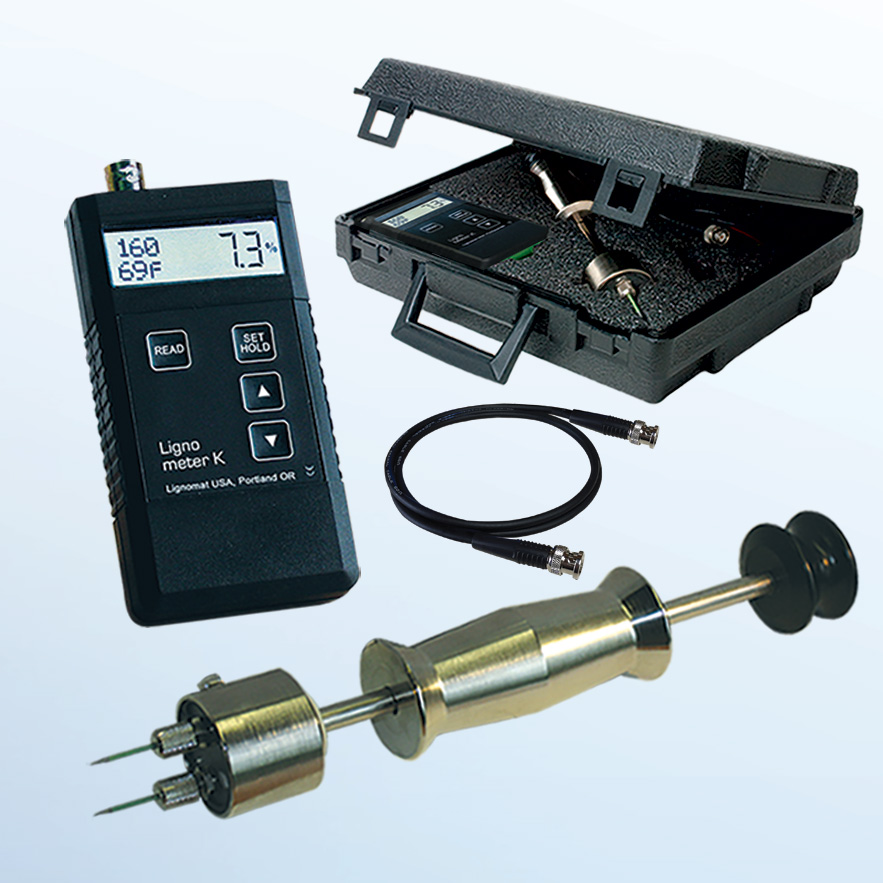How a Moisture Meter Can Enhance Your Building And Construction Tasks and Protect Against Damage
How a Moisture Meter Can Enhance Your Building And Construction Tasks and Protect Against Damage
Blog Article
The Ultimate Guide to Moisture Meters: A Comprehensive Overview and Just How They Can Conserve You Money
In the realm of structure upkeep, construction, and different markets, the relevance of properly gauging wetness degrees can not be overemphasized. Dampness meters function as vital tools in spotting and keeping track of moisture content in products, aiding in preventing pricey damages and ensuring the top quality of products. Recognizing the nuances of different kinds of moisture meters, their applications, and the possible cost-saving benefits they supply can be a game-changer for specialists and businesses alike. Uncovering how these tools can not only simplify processes yet also add to financial savings is a trip worth beginning on.
Sorts Of Moisture Meters
Different sorts of moisture meters are offered for various applications in various markets. One usual type is the pin-type dampness meter, which measures the electrical resistance in between 2 pins inserted into a product. This type is appropriate for timber, drywall, and various other building products. Pinless dampness meters, on the other hand, use electro-magnetic sensing unit plates to scan a larger location without causing damage to the product's surface area. These meters are perfect for swiftly assessing moisture levels in big locations such as floorings and walls.
Moreover, there are additionally specialized dampness meters designed for specific materials like soil, grain, or hay. These meters offer precise wetness readings tailored to the distinct properties of the material being tested. Infrared moisture meters gauge the thermal residential or commercial properties of a material to determine its moisture content non-invasively, making them useful for applications where pin or pinless meters might not be ideal. Recognizing the various kinds of wetness meters available can help industries pick one of the most proper tool for their particular moisture dimension requirements.

Advantages of Using Moisture Meters

In addition, making use of wetness meters can lead to boosted energy efficiency. In farming setups, wetness meters play an important function in optimizing plant returns by allowing farmers to keep an eye on soil dampness degrees and make notified irrigation choices.
Exactly How to Choose the Right Moisture Meter
Selecting the ideal wetness meter involves considering vital aspects such as material compatibility, dimension variety, and calibration accuracy. When picking a wetness meter, it's important to make certain that the meter is appropriate for the particular product you will be screening. Different products have varying electric properties that can impact moisture analyses, so selecting a meter made for why not check here your material is critical for precise outcomes. Furthermore, consider the dimension variety of the wetness meter. Ensure that the meter can find moisture degrees within the range needed for your applications. Calibration precision is another essential element to remember (Moisture Meter). Opt look these up for a dampness meter with trustworthy calibration to ensure specific and consistent readings. Some meters may call for periodic calibration adjustments, so recognizing the calibration process is very important. By carefully examining these variables, you can choose a wetness meter that fulfills your demands and offers precise dampness dimensions for your projects.
Proper Methods for Moisture Meter Use
To ensure exact wetness analyses and maximize the performance of a moisture meter, using appropriate strategies is necessary. When using a pin-type dampness meter, insert the pins or probes right into the material being tested up until they make full get in touch with. By adhering to these proper methods, users can depend on their dampness meter to offer reliable moisture degrees, assisting in avoiding pricey damage or making sure top quality in various applications.

Expense Savings Via Moisture Meter Applications
Exactly how can the strategic use of dampness meters result in substantial cost financial savings throughout various markets? Dampness meters play an essential duty in cost savings by preventing possible damages and ensuring quality assurance in various markets. In the agriculture market, dampness meters help in identifying the ideal time for collecting plants, avoiding over-drying or excess dampness that can influence the end product's high quality. This exact surveillance aids farmers avoid unnecessary losses and maximize their yield.

Furthermore, in the food handling sector, dampness meters are crucial for checking item high quality and guaranteeing conformity with security regulations. By precisely determining moisture content in foodstuff, suppliers can protect against perishing, preserve freshness, and reduce waste, resulting in substantial expense savings. Overall, the critical application of dampness meters is a useful investment that can lead news to significant expense reductions and boosted effectiveness across numerous markets.
Conclusion
Finally, wetness meters are valuable devices for gauging and finding moisture degrees in various products. By using the appropriate wetness meter and following correct strategies, individuals can effectively protect against costly problems triggered by excess dampness. Purchasing a top quality moisture meter can cause significant expense savings in the long run by recognizing prospective concerns early on and making it possible for prompt remediation. Inevitably, moisture meters are necessary instruments for preserving the honesty and longevity of structures and products.
Dampness meters offer as indispensable tools in discovering and checking moisture web content in products, aiding in preventing expensive damages and guaranteeing the high quality of items. Infrared wetness meters determine the thermal properties of a material to determine its moisture content non-invasively, making them useful for applications where pin or pinless meters may not be suitable.Dampness meters supply invaluable advantages in properly monitoring and analyzing dampness degrees in varied products and settings. In farming setups, wetness meters play an important function in optimizing crop returns by allowing farmers to keep an eye on soil moisture degrees and make notified irrigation decisions.In verdict, dampness meters are important devices for spotting and determining dampness levels in various products.
Report this page